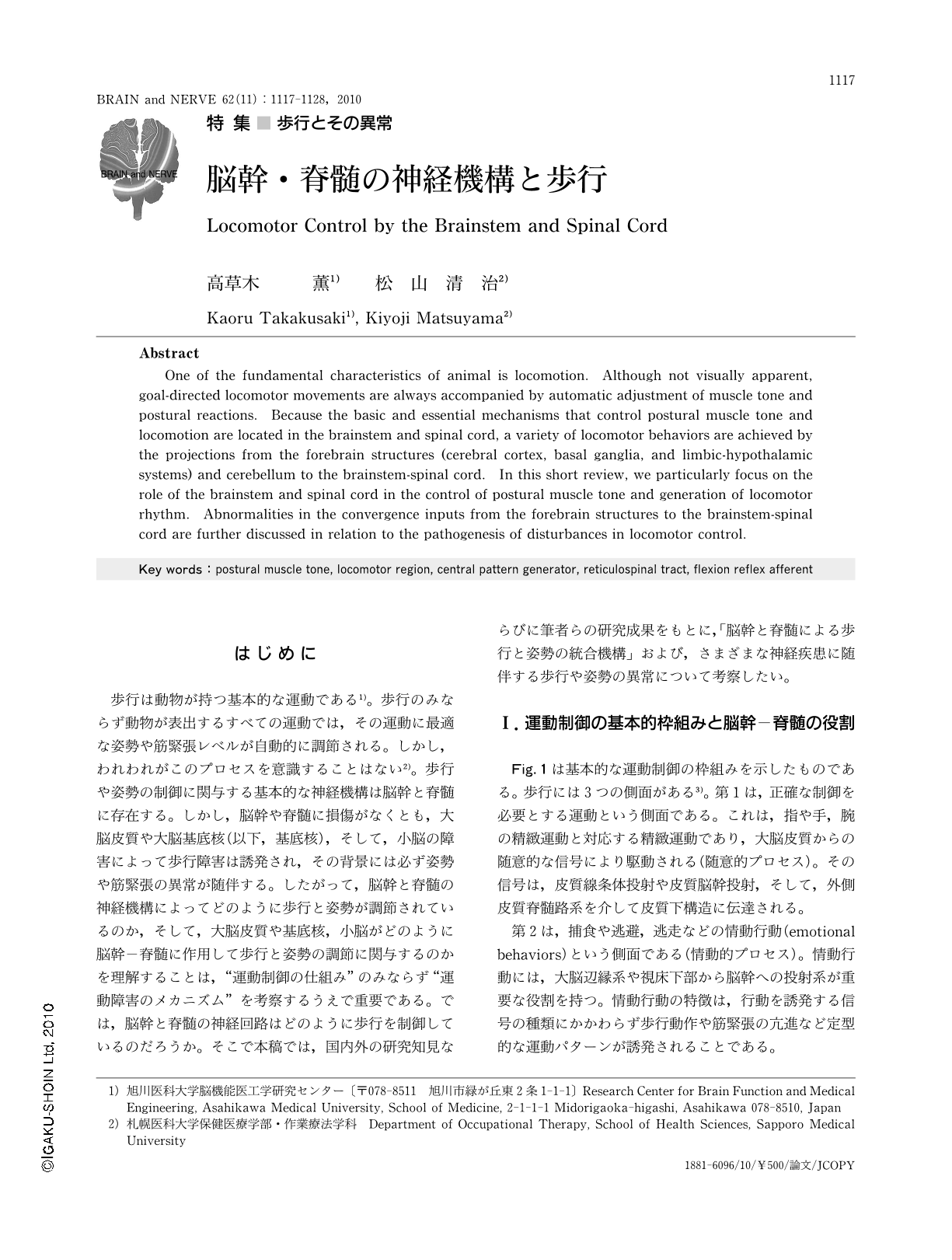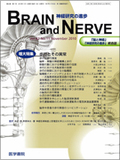Japanese
English
- 有料閲覧
- Abstract 文献概要
- 1ページ目 Look Inside
- 参考文献 Reference
はじめに
歩行は動物が持つ基本的な運動である1)。歩行のみならず動物が表出するすべての運動では,その運動に最適な姿勢や筋緊張レベルが自動的に調節される。しかし,われわれがこのプロセスを意識することはない2)。歩行や姿勢の制御に関与する基本的な神経機構は脳幹と脊髄に存在する。しかし,脳幹や脊髄に損傷がなくとも,大脳皮質や大脳基底核(以下,基底核),そして,小脳の障害によって歩行障害は誘発され,その背景には必ず姿勢や筋緊張の異常が随伴する。したがって,脳幹と脊髄の神経機構によってどのように歩行と姿勢が調節されているのか,そして,大脳皮質や基底核,小脳がどのように脳幹-脊髄に作用して歩行と姿勢の調節に関与するのかを理解することは,“運動制御の仕組み”のみならず“運動障害のメカニズム”を考察するうえで重要である。では,脳幹と脊髄の神経回路はどのように歩行を制御しているのだろうか。そこで本稿では,国内外の研究知見ならびに筆者らの研究成果をもとに,「脳幹と脊髄による歩行と姿勢の統合機構」および,さまざまな神経疾患に随伴する歩行や姿勢の異常について考察したい。
Abstract
One of the fundamental characteristics of animal is locomotion. Although not visually apparent,goal-directed locomotor movements are always accompanied by automatic adjustment of muscle tone and postural reactions. Because the basic and essential mechanisms that control postural muscle tone and locomotion are located in the brainstem and spinal cord,a variety of locomotor behaviors are achieved by the projections from the forebrain structures (cerebral cortex,basal ganglia,and limbic-hypothalamic systems) and cerebellum to the brainstem-spinal cord. In this short review,we particularly focus on the role of the brainstem and spinal cord in the control of postural muscle tone and generation of locomotor rhythm. Abnormalities in the convergence inputs from the forebrain structures to the brainstem-spinal cord are further discussed in relation to the pathogenesis of disturbances in locomotor control.

Copyright © 2010, Igaku-Shoin Ltd. All rights reserved.


